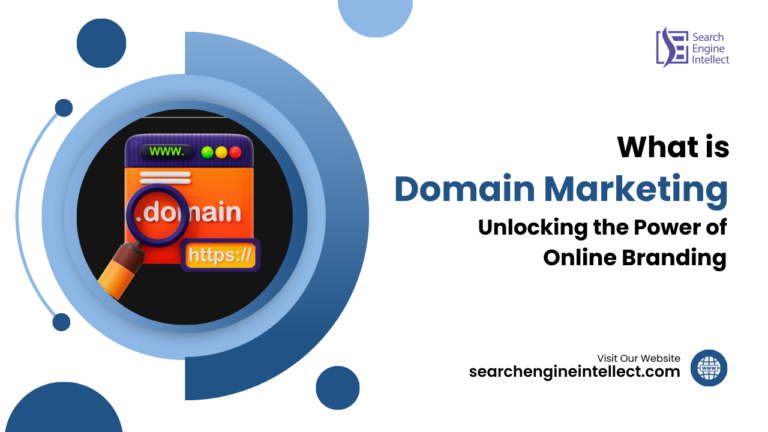Understanding Do Follow vs No Follow Backlinks
Backlinks are a crucial component of search engine optimization (SEO), as they help search engines understand the relevance and authority of your website. However, not all backlinks are created equal. There are two main types of backlinks: do follow and no follow. Understanding the Understanding Do Follow vs No Follow Backlinks is essential for building an effective SEO strategy.
Table of Contents
What is a Do Follow Link?
A do follow link is a link that search engines can follow and use to pass link equity or “link juice” to the linked website. These links are considered valuable for SEO because they help improve the linked website’s authority and rankings in search engine results pages (SERPs). Do follow links are the default type of link, and they are created without any additional attributes.
Here’s an example of a do follow link:
xml<a href="https://example.com">anchor text here</a>Unless you use the rel=”no follow” element, search engines will follow every link on your page. For example, if you include a link to another site in your article, it is automatically a do follow link. A search engine views your link as a vote of confidence in the website you are linking to.
Furthermore, if a website automatically links to your site, search engines will recognize it as a useful resource. So, attempt to create dofollow backlinks. To learn more about backlinks, check out our blog post What Are Backlinks in SEO?
Several strategies include:
- Publish useful information that will benefit your readers.
- Create a valuable tool and distribute it for free, so that other media can link to it in their material.
- Guest articles on websites that provide do-follow connections.
Benefits of Do Follow Links
- Increased Authority: They enhance your website’s authority by passing link equity.
- Better Search Rankings: Accumulating do follow links can improve your rankings for relevant keywords.
- Improved Crawlability: They help search engines discover and index your pages more effectively.
- Referral Traffic: Quality do follow links can drive targeted traffic from reputable sources.
Common Scenarios to Use Do Follow Links
- Linking to High-Quality, Relevant Content
Use do follow links when referencing valuable and trustworthy third-party content. This signals to search engines that you endorse the linked material, enhancing your site’s credibility. - Internal Links
Always use do follow links for internal navigation. This helps search engines understand your website’s structure and pass link equity between pages. - Citing Authoritative Sources
When referencing reputable sources, such as government sites or respected publications, do follow links reinforce the credibility of your content. - Business Partners or Affiliates
For trusted partners where no compensation is involved, use do follow links to maintain relevance and quality in your content. - Natural Editorial Links
Earned editorial links from other sites that genuinely endorse your content should be do follow, as they reflect the quality of your work. - Guest Blogging
When contributing guest posts to reputable blogs, include do follow links to enhance your authority and drive traffic back to your site. - Resource Pages
If you create a resource page that includes links to useful tools and articles, ensure these links are do follow to provide value to your audience. - Social Media Profiles
Linking to your social media profiles from your website with do follow links can enhance your online presence and authority. - Testimonials and Reviews
When providing testimonials for products or services, include do follow links to your website to enhance credibility and trust. - Industry Associations
If you are a member of an industry association, linking to their site with a do follow link can enhance your authority and credibility.
Ratio of Do Follow to No Follow Links
While there is no definitive ratio of do follow to no follow links that works for every website, a good rule of thumb is to aim for a mix of around 60% do follow and 40% no follow links. This helps create a natural and diverse link profile that search engines can easily understand and trust.
What is a No Follow Link?

A no follow link is a link that includes the rel=”no follow” attribute, which tells search engines not to follow or pass any link equity to the linked website. These links are typically used for links that the website owner does not want to endorse, such as paid links, user-generated content (UGC), or links to low-quality or irrelevant websites.
An example of a no follow link is:
xml<a href="https://example.com" rel="nofollow">anchor text here</a>These links do not increase PageRank or improve SERP ranking. As a result, a no follow link from one website to another, or vice versa, does not convey link equity to the destination website. As a result, search engines will not follow that link when crawling the website and will attribute no value to it.
Benefits of No Follow Links
- Increased brand awareness and exposure
- Potential for future do follow link acquisition
- Compliance with search engine guidelines
- Optimization of crawl budget
- Disclosure of sponsored or paid links
Impact of No Follow Links on SEO
While no follow links do not directly impact your website’s search rankings, they can still provide benefits such as:
- Driving relevant traffic to your website
- Resulting in residual do follow links from other publications
- Boosting brand awareness
- Building a natural link portfolio
Common Scenarios to Use No Follow Links
- Sponsored or Paid Links
- When you receive compensation for a link, it should be marked as no follow to comply with Google’s guidelines and avoid penalties.
- User-Generated Content
- Links in comments, forums, or other user-generated areas should be no follow to prevent spam and manipulation of search rankings.
- Untrusted or Low-Quality Sources
- If you’re linking to a site that is untrustworthy or of low quality, use no follow to indicate you do not endorse that site.
- Login/Registration Pages
- Links to login or registration pages typically lack valuable content for search engines, so they should be marked as no follow.
- Affiliate or Partnership Links
- For affiliate links where you earn commissions, use no follow to adhere to search engine guidelines regarding paid content.
- Temporary Promotions
- Links for limited-time offers or promotions that may not be permanent can be marked as no follow to avoid affecting long-term SEO.
- Social Media Links
- Links shared on social media platforms often should be no follow, as they do not provide reliable SEO value.
- Content Aggregators
- When linking to content aggregators or sites that compile links, use no follow to avoid passing authority to potentially low-quality sources.
- Links in Email Newsletters
- Links included in emails should be no follow, as they do not contribute to SEO and can be seen as spammy if followed.
- Links to Non-Content Pages
- Pages that do not offer valuable content, like terms and conditions or privacy policies, should have no follow links to optimize crawl budget.
Compliance with Search Engine Guidelines
Using no follow links for sponsored content, UGC, and untrusted sources demonstrates adherence to search engine guidelines and helps avoid potential penalties for manipulative link schemes.
Optimizing Your Link Profile
To optimize your link profile, focus on acquiring high-quality, relevant do follow links from authoritative websites in your industry. At the same time, use no follow links appropriately to maintain transparency and comply with search engine guidelines.]
In conclusion, understanding the difference between do follow and no follow links is crucial for building an effective SEO strategy. By focusing on acquiring high-quality do follow links while using no follow links appropriately, you can improve your website’s authority, relevance, and search rankings over time.

Differences Between do follow and no follow Links
Here is a comparison of do follow and no follow links in a table format:
| Characteristic | do follow Links | no follow Links |
|---|---|---|
| Definition | Links that pass link equity and authority to the linked website | Links that do not pass link equity and are ignored by search engines |
| Impact on SEO | Directly improve search rankings by passing link juice | Do not directly impact search rankings or pass link equity |
| Crawlability | Search engines follow and crawl do follow links | Search engines do not follow or crawl no follow links |
| Endorsement | Imply an endorsement or recommendation of the linked website | Imply no endorsement or recommendation of the linked website |
| Common Uses | – Linking to authoritative, relevant sources – Internal linking on your own website – Naturally earned editorial links | – Sponsored or paid links – User-generated content (e.g. comments) – Links to untrusted or low-quality sources |
| Ratio | Aim for around 60% of your backlinks to be do follow | Aim for around 40% of your backlinks to be no follow |
| Benefits | – Increase link equity and authority – Improve search rankings – Drive referral traffic | – Increase brand awareness and exposure – Potential to earn future do follow links – Comply with guidelines and avoid penalties |
The key differences are that do follow links pass link equity and directly impact SEO, while no follow links do not. However, no follow links can still provide value through increased visibility, referral traffic, and building relationships that may lead to future do follow opportunities. A healthy backlink profile incorporates a mix of both types of links.








